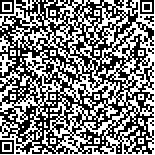杨勇,王启宁,许东方,等.肌肉再分布技术在智能仿生假肢信号识别中的应用[J].中华物理医学与康复杂志,2020,42(6):541-545
扫码阅读全文

|
| 肌肉再分布技术在智能仿生假肢信号识别中的应用 |
|
| |
| DOI:10.3760/cma.j.issn.0254-1424.2020.06.014 |
| 中文关键词: 肌肉移位 智能 仿生 假肢 电容信号 |
| 英文关键词: Muscle distribution Intelligent prostheses Bionics Prostheses Capacitive signaling |
| 基金项目:国家自然科学基金项目(81972131);国家重点研发计划“智能机器人”重点专项(2018YBF1307300) |
|
| 摘要点击次数: 5049 |
| 全文下载次数: 5672 |
| 中文摘要: |
| 目的 探讨肌肉再分布技术(MRT)在智能仿生假肢信号识别中的应用价值。 方法 于2016年12月至2017年4月期间采用MRT技术治疗4例肢体远端截肢患者,均为男性,其中上肢截肢患者3例,截肢水平分别位于前臂中远1/3处、腕掌关节和腕中关节;下肢截肢患者1例,截肢水平位于小腿中远1/3处。MRT手术是利用残端肢体内的肌肉、肌腱进行移位,将4~6根肌腱锚定在皮肤不同区域,通过肌肉主动收缩牵拉肌腱,使不同区域皮肤发生明显形变。术后观察项目包括皮肤形变、电容信号数据及并发症情况等。在进行电容信号测量时,嘱患者分别执行抓握、屈腕、伸腕、屈指、伸指,或踝背伸与跖屈、伸趾和屈趾动作,利用电容传感测量系统采集患肢形变信息并进行分析。 结果 4例患者均获随访,共有20处部位接受MRT手术。术后3个月时患者均能主动控制相应肌肉收缩并产生皮肤形变,有效形变率为80%(16/20)。电容信号测量结果分别利用线性判别分析(LDA)和二次判别分析(QDA)两种分类器对各种动作进行识别,发现上肢整体识别准确率分别为97.27%和100%,每种动作各自识别准确率均为100%;下肢整体识别准确率分别为95.32%和100%,每种动作各自识别准确率均为100%。术后有1例患者创面不愈,经多次换药后愈合。 结论 MRT能有效将人体运动意图进行输出,增加了运动信号源的数目及强度,有助于患者更好地控制智能仿生假肢,为人机交互提供了新的途径。 |
| 英文摘要: |
| Objective To explore the utility of the muscle redistribution technique (MRT) in the signal recognition of an intelligent bionic prosthesis. Methods Between December 2016 and April 2017, 4 male patients were treated with muscle redistribution procedures. Among them, 3 were upper limb amputees of the distal 1/3 of the forearm, at the carpometacarpal joint and at the midcarpal joint. One was a lower limb amputee at the distal 1/3 of the lower leg. In each case, 4-6 muscles and tendons in the stump were transferred and the tendons were anchored in different areas of the skin. When the muscle contracted actively, the tendon pulled the skin, resulting in obvious deformation of the skin in different areas. The skin′s deformation, capacitance signal data and postoperative complications were used as indicators in the evaluations. To measure the capacitance signals the patients were asked to grip, flex and extend the wrist, and flex and extend the fingers , or dorsi- and plantar-flex the ankle, and flex and extend the toes. With the help of capacitance sensors the limb′s deformation was analyzed. Results Three months after the surgery the patients were able to actively control contraction of the transferred muscle and produce skin deformation. At the final follow-up, the effective deformation rate was 80% (16/20). Two kinds of classifiers were identified by linear discriminant analysis and quadratic discriminant analysis. In the upper limb, the overall recognition accuracies were 97.27% and 100% respectively, and the recognition accuracy of each action was 100%. In the lower limb, the overall recognition accuracies were 95.32% and 100%, and the recognition accuracy of each action was again 100%. In one case wound healing was delayed and several dressing changes were required. Conclusions MRT can effectively output motion intentions and increase the number and intensity of motion signals. The procedure provides a novel way for better control of intelligent bionic prostheses. |
|
查看全文
查看/发表评论 下载PDF阅读器 |
| 关闭 |
|
|
|